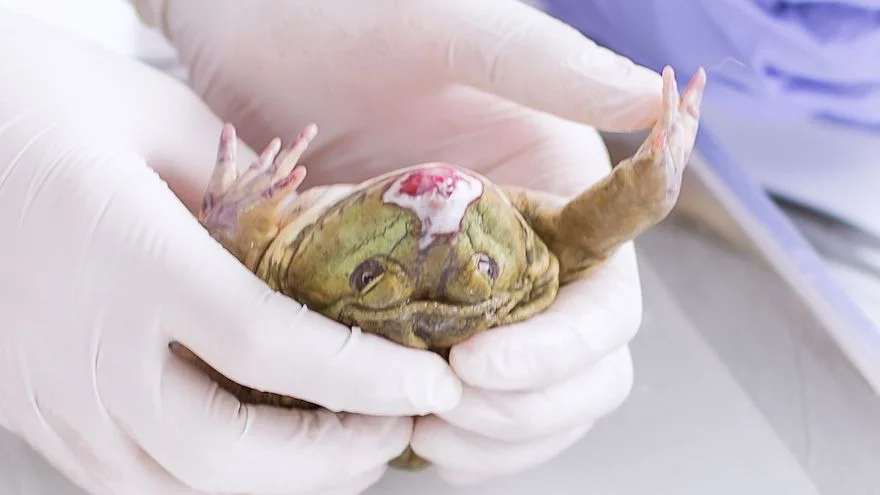Being the most common amphibian in the world, frogs get a lot of attention from experts and enthusiasts.
It makes up more than half of the percentage of amphibians living today, and it is also widespread, occurring in every continent except Antarctica.
There is a lot of interesting information we can get on the frog, but in this article, we’ll focus on the frog’s diet and hunting strategy. What do frogs eat in the wild?
Frogs feed mainly on insects, but their dietary need is more complex than getting bugs for dinner.
What they consume (and how they do so) depends on factors like the species and the environment.
Want to know more? Let’s delve in!
What Do Frogs Eat?
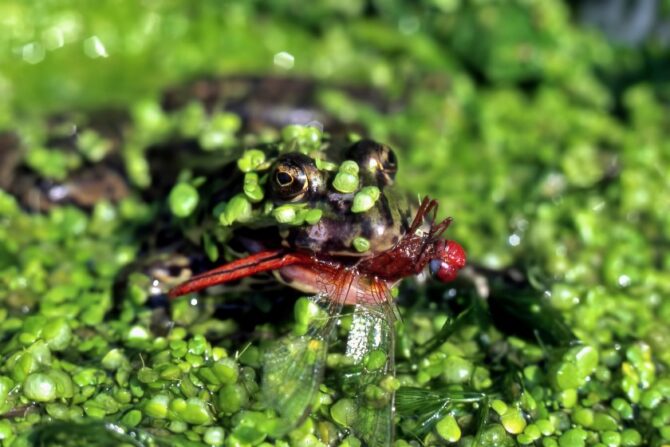
The common stereotype of a sitting frog striking its tongue at a flying insect has a ring of truth to it.
Frogs enjoy eating insects, especially those that live close to ponds, their habitat.
They feed on mollusks as well, which can also be found close to their habitat.
That said, it won’t hesitate to go after other prey when it has the opportunity.
It’s not uncommon to see a frog feed on birds, small snakes, and small mammals. Some will even eat other frogs!
Generally, frogs aren’t scavengers. They are known to prefer live prey and will avoid carrion, which is why they get classified as a carnivore.
However, tadpoles do not follow the same rules as adults and may scavenge for survival or even eat plants.
Overall, frogs of different ages can’t be put in a dietary box, even as adults.
Age influences what they feed on, as well as the environment too. In a place where insects are scarce, they feast on what they can find.
How Do Frogs Hunt For Food?

Many frog species are termed opportunistic hunters because of their ambush method. They sit quietly, waiting for the unfortunate insect to pass by.
Once the insect is in a good position, out comes the long sticky tongue, a frog’s best hunting tool.1
It can lift weights that are almost twice its body weight with the tongue alone.
While they may employ other methods of hunting, like grabbing at the prey, the tongue remains their trump card.
This doesn’t mean the frog is bereft of other senses that help it hunt.
On the contrary, it employs all its senses when waiting for prey, though, to the casual observer, it may seem idle.
For starters, a frog’s sense of touch is high, and if a human had that, the person would be classified as ultra-sensitive.
Frogs can also detect slight changes in temperature, vibrations, and pressure using an almost invisible organ.2
Even the tiniest insect releases a vibration which this organ will pick up.
Frogs also have strong eyesight which uses both night vision and can see at long distances.
Added to this is the peripheral vision that aids it in seeing prey even from the sides.
The sight sense is limited as they can’t see objects well when up close, but whatever they lack in sight, they make up in the sense of smell.
Finally, the sense of taste is strong as well. As opportunistic as frogs may seem, they are picky with taste.
Carrion may not be that tasty to these animals, hence the refusal.
What Do Frogs Eat in the Wild?
Frogs in the wild depend on no one but themselves to feed as they have no pet parent offering them a free meal.
Consequently, they are primarily hunters and take advantage of any live prey they can find in their environment.
As we mentioned earlier, frogs prioritize insects, though they can’t be classified as insectivores.
Examples of insects they feed on are flies, beetles, dragonflies, grasshoppers, and ants.
When it can’t find insects, or it has the opportunity, frogs can go after small mammals like bats, turtles, and mice.
Birds form a part of a wild frog’s diet, and they can as well capture small fish. Additional prey includes snails, worms, slugs, and spiders.
Related: Do Frogs Drink Water
What About Pet Frogs?

Pet frogs depend on their captives to feed, and given that they are in a different environment, it could influence their diet.
That said, there isn’t any major difference between pet frogs and their wild counterparts in terms of diet.
To keep a frog happy, ensure you have a fresh supply of insects like crickets, locusts, grasshoppers, and flies.
You can also spice things up with snails, slugs, and worms. Small frog species may not care much for mammals, but if you own a bigger one, include some mice.
Tadpoles and froglets in captivity can be fed algae, leaves, roots, wafers, and tadpole pellets.
As it grows, include some animals like crickets, worms, and fruit flies.
Ensure that whatever you give your pet frog is alive and fresh. Its pickiness might be higher in a pampered environment, leading it to reject anything stale or dead.
Many pet parents get tempted to feed their pet frog leaves and leftover human food. This is not advisable.
What do Tadpoles Eat?
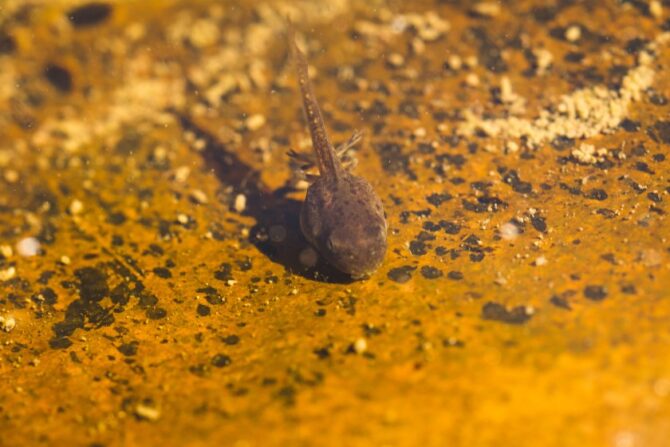
The fight for survival is higher amongst tadpoles as they are more vulnerable and in the process of growth.
This makes them more opportunistic than the grown frog. Their aquatic habitat also has a role to play.
Tadpoles have gills in place of lungs and are confined to the waters till it grows.
The habitat is filled with algae and other plant-based material, so tadpoles are primarily herbivorous.
Another difference between tadpoles and grown frogs is that the former scavenge if need be, feeding on dead insects and animal matter.
Tadpoles are also known to turn to cannibalism when resources are low.3
As the tadpoles grow in size, their diet transitions to accommodate animals. They start feeding on worms, flies, and very small insects.
Not all frog species go through the tadpole process. Some become froglets before maturing. The diet at this stage is similar to that of the tadpole.
Can Frogs Eat Plants?
Tadpoles and froglets are majorly herbivores, feeding on algae and other aquatic plants.
If we consider them alongside adults, frogs can be classified as omnivores. However, this herbivorous phase often lasts only till the baby frog grows.
Adults are predominantly carnivores and will rarely feed on plants. This can only happen in an environment with no animals for the frog to eat.
Plants provide nutrients for them, but won’t be their first choice in an ideal situation.
Frog Diet: List of Food Frogs Eat

- Insects
- Molluscs
- Fish
- Algae
- Birds
- Reptiles
- Spiders
- Other frogs
- Aquatic plants
- Fruit flies
- Rodents
Related: How Long Can Frogs Go Without Food Or Water?
Related Questions
What is the frog’s habitat?
Frogs often stay close to freshwater, though as adults, they are not aquatic animals. Their choice of habitat is for the sake of food and mating.
They inhabit ponds, swamps, and tropical forests where the weather is cool. They can also adapt to deserts.
What do frogs like the most?
Frogs tend to prefer insects, especially flying ones like crickets that they easily trap with their tongues. In a place filled with insects, they may seem like insectivores.
They eat other smaller animals when insects are scarce, or an opportunity arises for something different.
Do frogs eat every day?
Frogs eat well, and those in the wild can eat as many times as they find food.
In captivity, their diet needs to be regulated, so they don’t get overweight, as they don’t exert energy like those in the wild.
Younger frogs can be fed once a day. Adults require around 2-3 meals daily.
Summary
Frogs don’t have a fixed diet, and though they are often classified as carnivores, they are herbivores as tadpoles and can be omnivores sometimes.
These opportunistic hunters go after what they can prey on (alive better than dead), but in an ideal environment, they prefer insects.
References & Notes
- 9 Incredible Facts About Frog Tongues. Insider.
- The amphibians’ world: sense organs and communication. Oxford Academic.
- Tadpoles Turn to Cannibalism Only When Desperate. Scientific American.
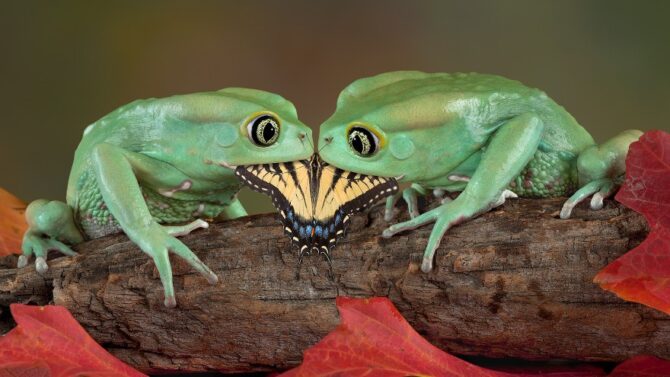

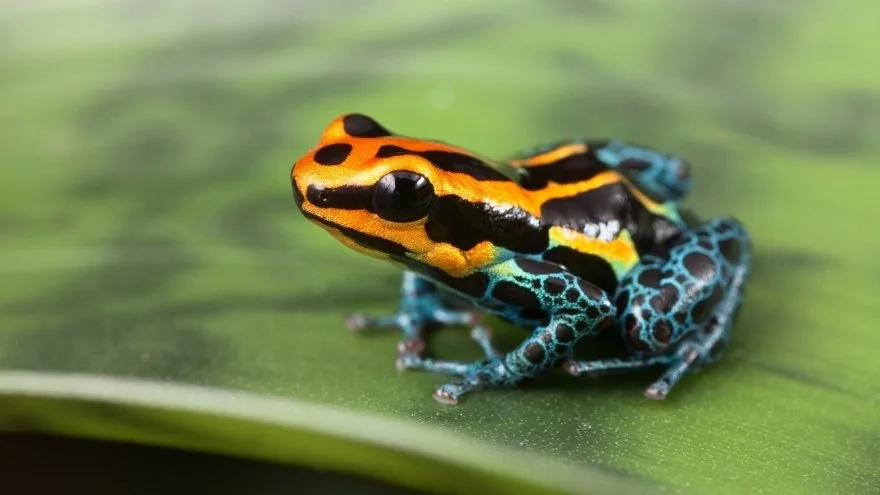
![How Long Can Frogs Go Without Food Or Water [Answered]](https://animalvivid.com/wp-content/uploads/2022/08/How-Long-Can-Frogs-Go-Without-Food-Or-Water-Answered.jpg.webp)


